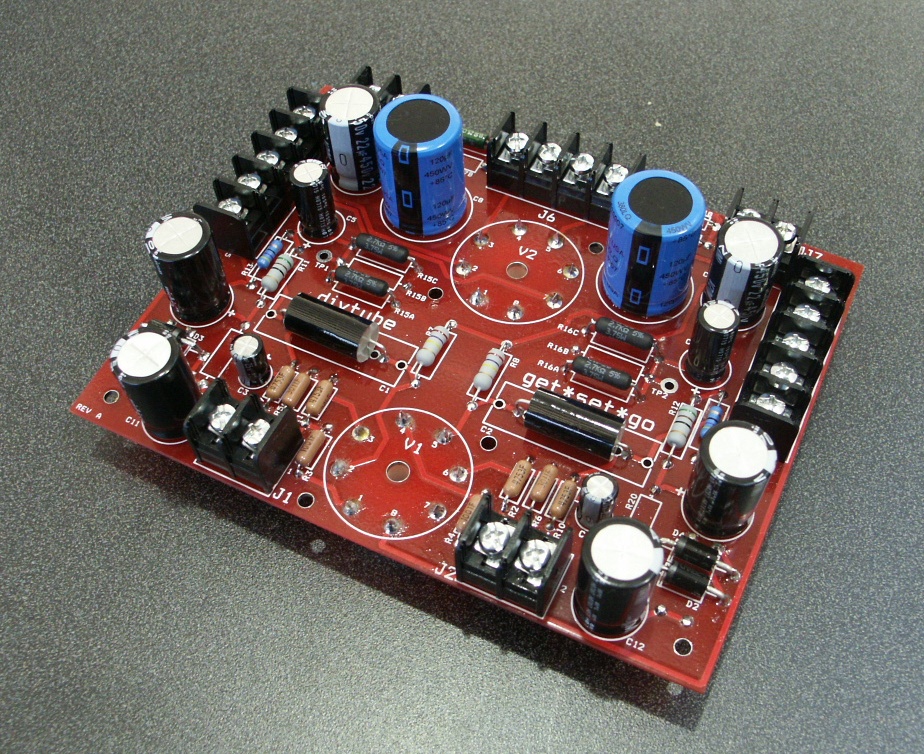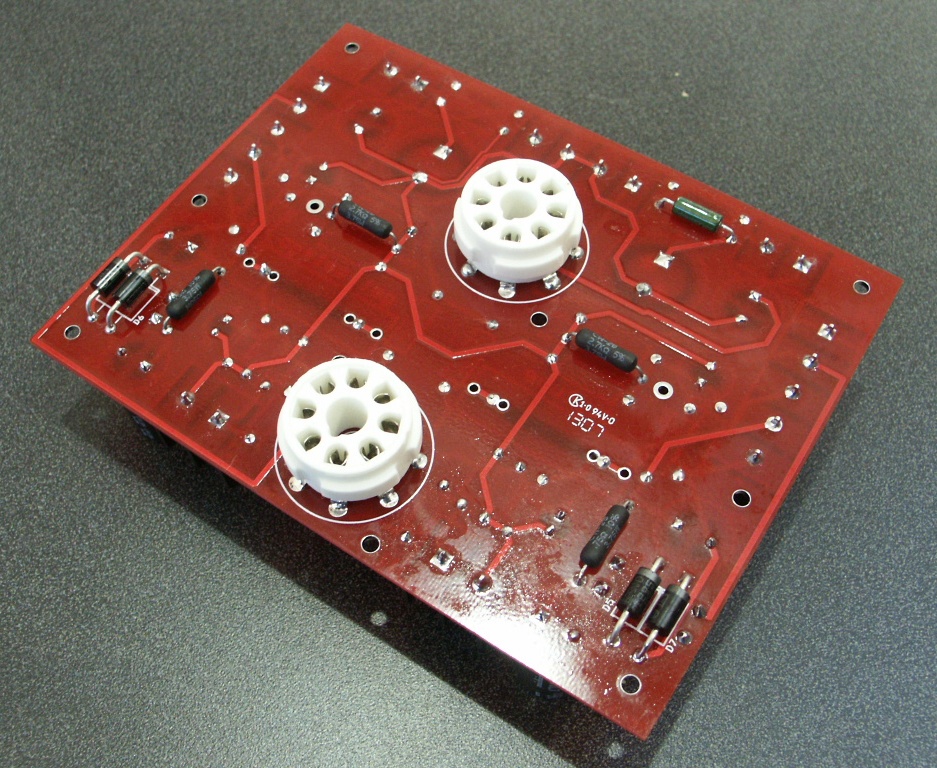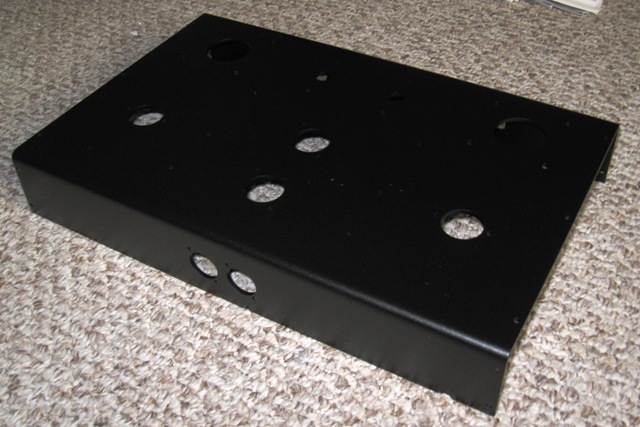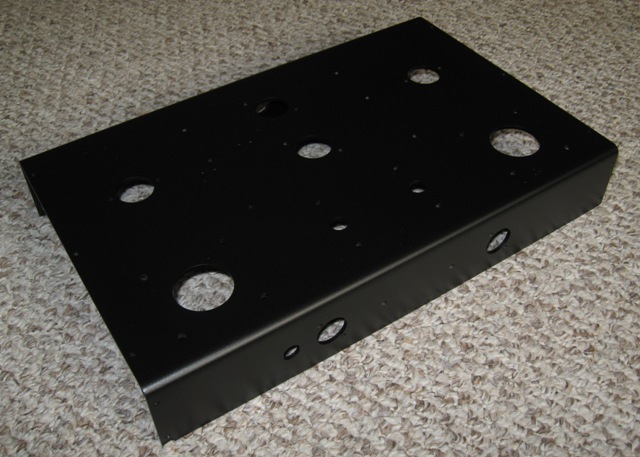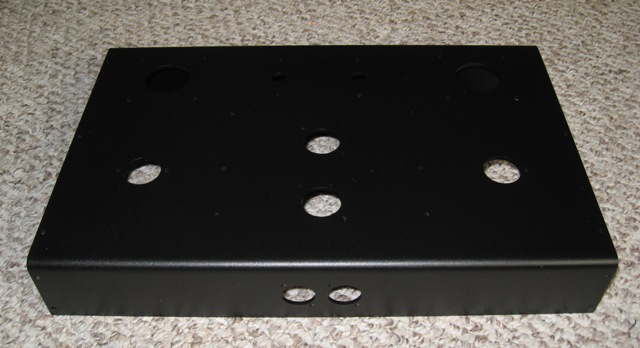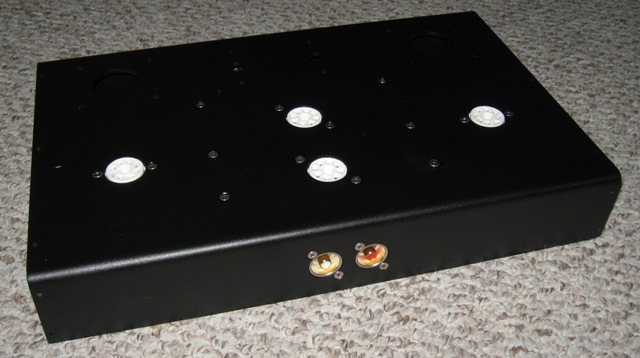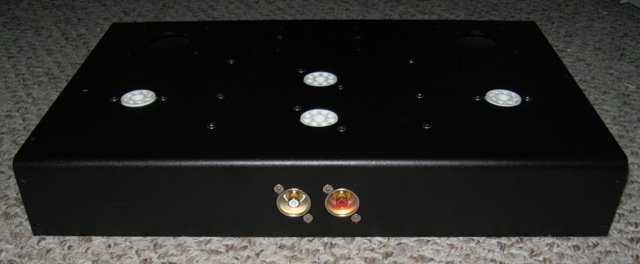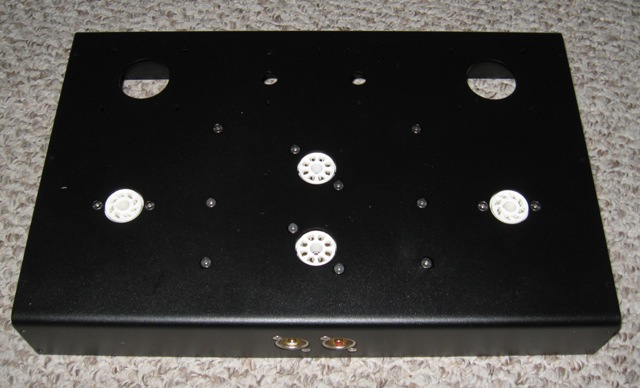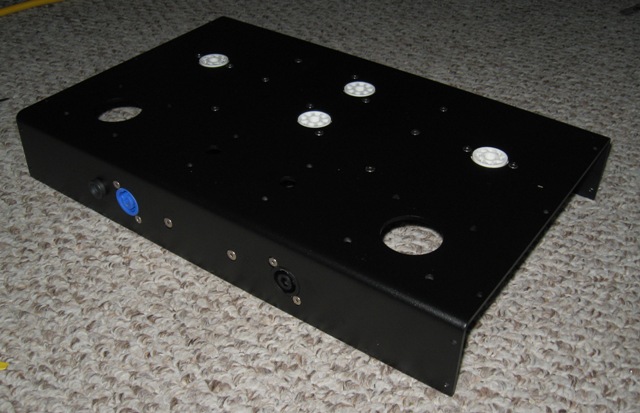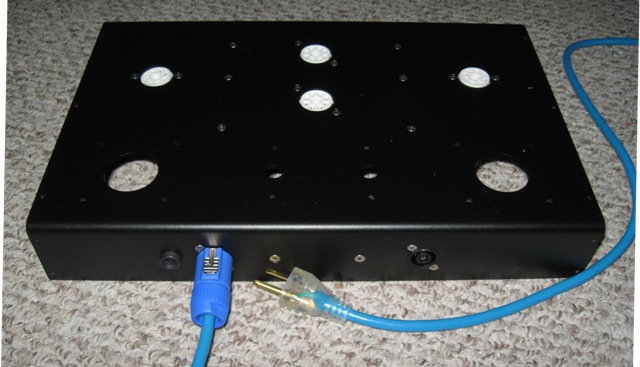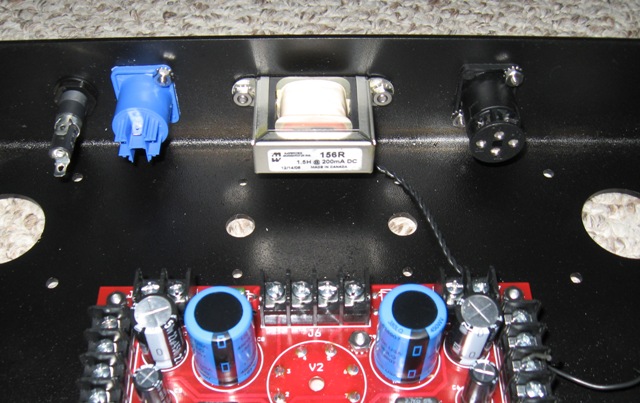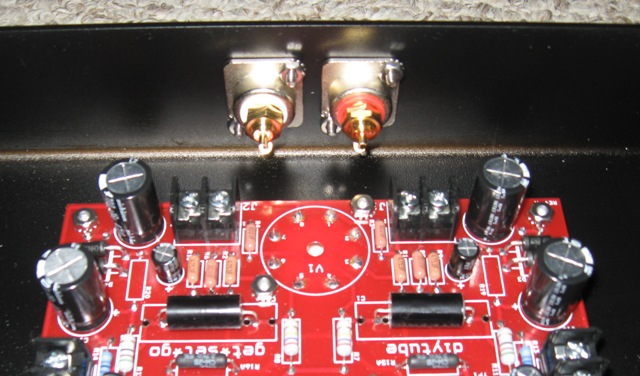Front 3/4 View:
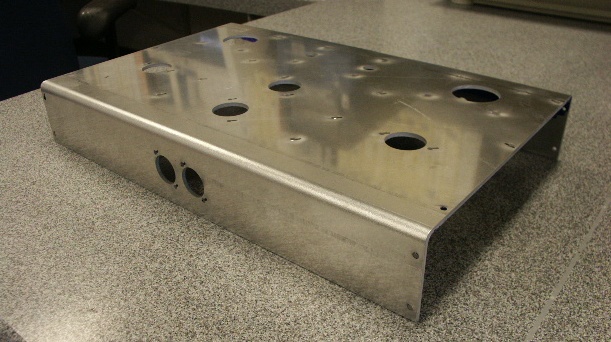
The chassis was cut from 0.130" 3000-series aluminum plate. The flat panel measured 14-3/4" by 16".
After the panel was bent to from the front and rear the chassis measured roughly 2-1/2" tall, 16" wide and 10-1/4" deep.
The two hole patterns on the front of the chassis are for Neutrik RCA input jacks: Neutrik Co. RCA Panel Jack Products Page.
Top 3/4 View:
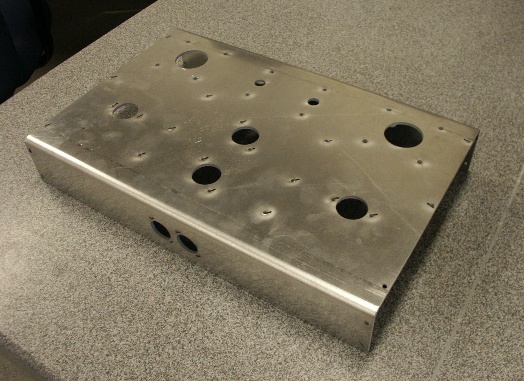
All of the PCB, octal, and jack mounting holes are 0.140" holes for 6-32 fasteners.
The mounting holes for the power transformer are 0.170" for 8-32 fasteners.
I guessed at the stud size of the James OPTs. The hole size is currently 0.20" (5mm). Does anyone recall what the actual stud size for the James OPTs are?
Back 3/4 View:
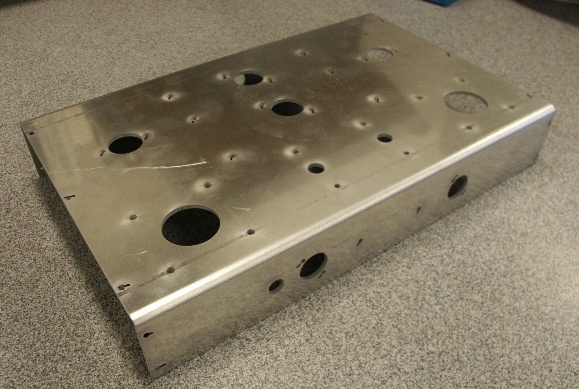
Here on the back panel you can see the double-D cutout for the fuse holder and two more Neutrik jack hole patterns.
These hole patterns are for Neutrik Speakon loud speaker interconnect and PowerCon power interconnect.
The two holes on either size of the chassis centerline (between the two panel jack hole patterns) are for the choke, which should mount on the inside of the chassis, and under the power transformer.
I took a leap of faith on this, and I hope that the orientation (and core flux, etc) of the choke and transformer isn't detrimental to the performance of the amp. Any thoughts on that?
I'll try to add updates with pictures as I move forward. The next steps are:
1. Stuff and solder the PCB - I'm using mostly the called for components. I had to sub out a few parts that were back ordered and I picked different electromechanicals (fuse holders, switches, etc)
2. Powdercoat the chassis- I'm still up in the air on what color. I think I want to use the champagne James OPTs, so I need to pick something that looks good with that. Wrinkle black looks good with everything, right?
3. Make decorative wood end-plates. The right side end plate with have the power switch countersunk 2 or 3 inches back from the front plate. Otherwise, the panels will be taller and deeper than the chassis by about 3/32" and 1/2" wide; this will make the amp 17" wide.
Any input, comments or questions are appreciated.
drew*

 Nice work!
Nice work!
